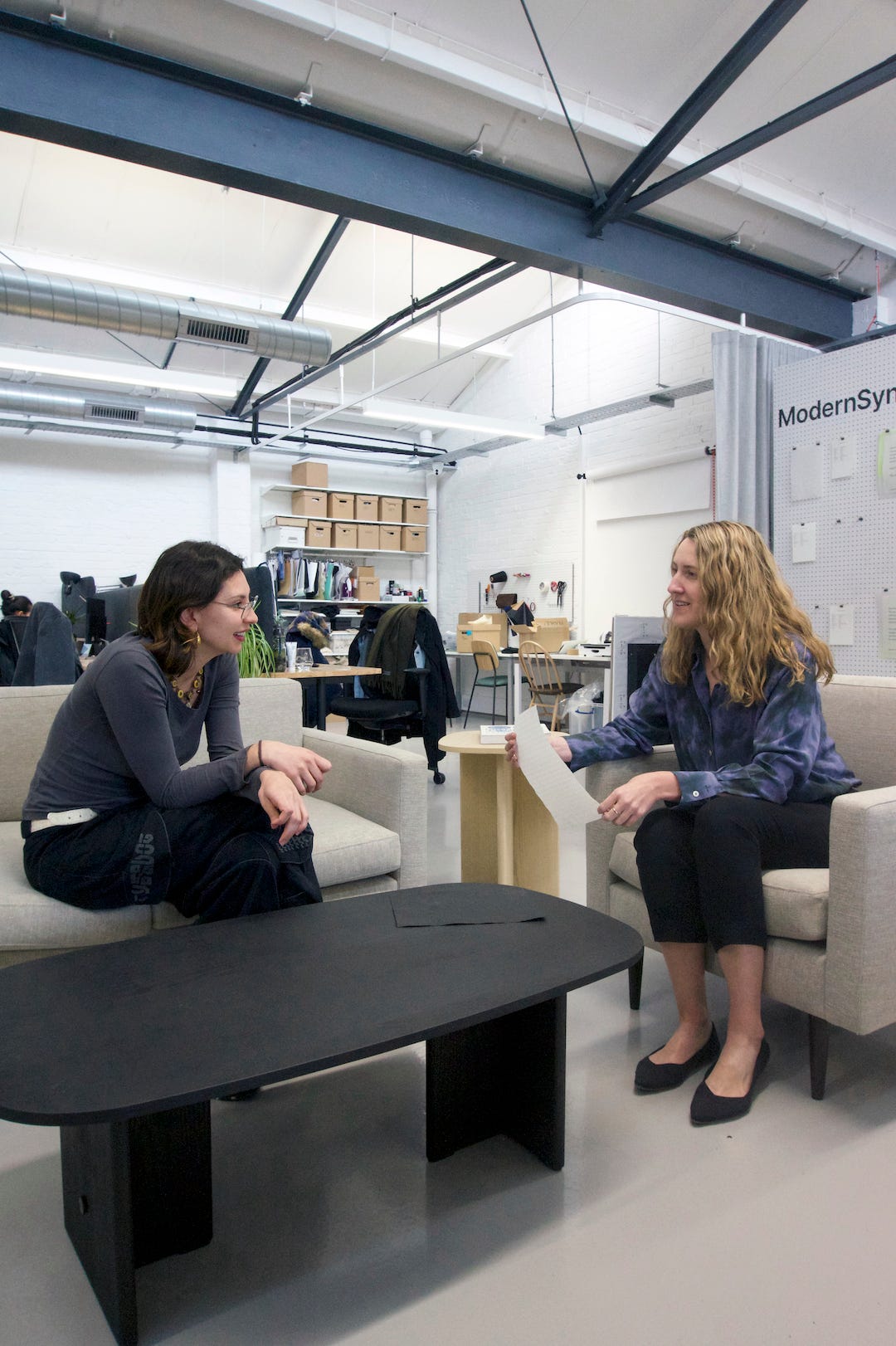Today at the garden of tomorrow festival, we will be exploring “nature the designer” during our panel discussion at 2pm. Tina Wetshi, our co-founder will be in conversation with Kiki Grammatopoulos, Gracey Owusu-Agyemang and Tim Williams, rethinking structure and supply chain models to explore how we can make sure Nature takes centre stage as the designer.
The thought takes us back to an interview between Colèchi’s researcher, Justina Alexandroff and Modern Synthesis co-founder Jen Keane; captured in our AGREENCULTURE: Fashion and Farming print journal. In this excerpt Jen shares how nature sparks their material innovations and how her Adidas days shape her business today.
Excerpt from Colèchi Journal
By Justina Alexandroff
Founded by ex-Adidas designer Jen Keane and synthetic biologist Dr Ben Reeve, Modern Synthesis' pilot facility in South London has allowed them to continue to grow both the size of their team and more of their biomaterials. Within their labs, they employ microbes to grow nanocellulose-based materials that have the potential to one day replace problematic textile systems, affecting multiple industries such as apparel, accessories and automotive. I had the pleasure of interviewing Jen about the biological process behind their materials, lessons from the industry and her hopes for scaling up production at Modern Synthesis.
JEN KEANE (JK): I think first, I need to probably explain the material that we use and why we do that. We work with microbes, particularly bacteria. The particular strain of bacteria we use was isolated and sequenced from Kombucha tea almost a decade ago by my co-founder Ben, with his team at Imperial College London. So they've been working with this for a very long time. Kombucha uses a SCOBY, which stands for a symbiotic culture of bacteria and yeast. The yeast makes all of the fizziness and the bacteria produces all the material, but they live very happily together. These bacteria produce a lot of material really efficiently and they formed this process to protect themselves as it's a UV-resistant material, as otherwise, the sun would kill them. Or at least that's why they think that they evolved to produce this material.
JUSTINA ALEXANDROFF (JA): You mentioned the patterns in your material samples. Are these inspired by nature?
JEN KEANE (JK): It was inspired by the way that the bacteria works. When the bacteria grows, it spins the fibres behind it. So they leave a trail behind them almost like a weaving shuttle. I thought ‘How can I utilise that natural movement and motion to form the actual textile structure itself?’ And that's why it was originally called ‘microbial weaving.’ The process has changed a lot since then, so we don't really call it microbial weaving anymore. It's more of a technology platform that we’re building because we can make a lot of different sub-processes using that now.
JA: Yeah, I can imagine how, as your production process changes and develops, you have to keep re-defining the technology – although I love the words ‘microbial weaving’. You used to work as a designer at Adidas, right? How did that equip you for the work that you are doing now and did you ever think that biomaterials would be incorporated into the material industry on such a mass scale?
JK: I learned a lot about systems of production at Adidas. I think that's really what's helped me and the company get this far actually. We have an understanding of the interrelated world of supply chains. You source the yarns, and then you create textiles, and then it goes to the different garment manufacturers. Knowing how interrelated all those systems are is really key to being able to scale these types of technologies up. And also to redesign those systems, to change something, you have to understand it. I used to say, you can't break boundaries without understanding them first. There are hundreds and thousands of years of textile know-how that's out there and so you really need to incorporate those ideas and experts in your process. Also understanding a product’s needs and how they're going to be tested in the real world is really helpful.
Read the full article in the print journal. Available at journal.colechi.com.
You can find copies of the journal at a special price at The Garden of Tomorrow Festival.






